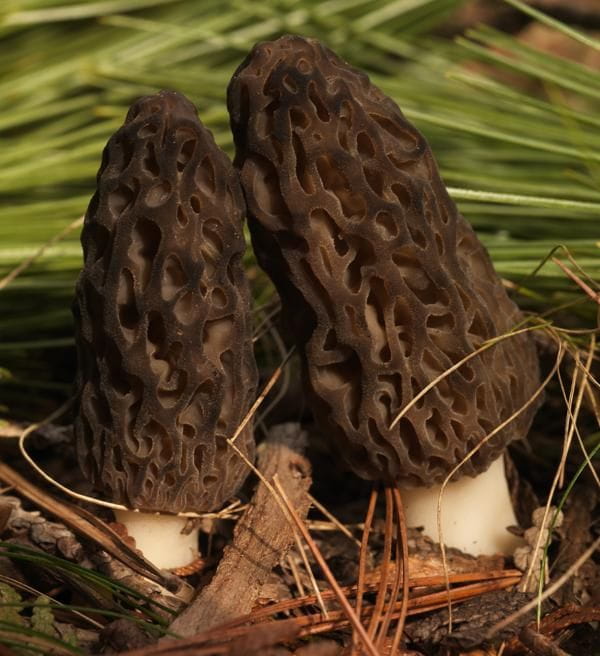800-367-8557 | 231-547-2101
Hike through the beautiful woods in the Charlevoix area to locate the elusive and delicious morel mushroom. There are many accounts on where and how to find them and most seasoned hunters will never give out information on their "spot". You may find them near dead or dying elms, old apple orchards, old ash, and poplar trees. It truly can be a hit-and-miss adventure at times, so don't get
If you've never hunted morels, we recommend asking a local who is familiar with the sport. (If you can find someone willing to disclose their coveted hunting grounds that is; maybe offer to be blindfolded for the trip out). If you can't find a generous fellow gatherer, pick up a book on morel hunting for beginners. There are a bunch to choose from at Round Lake Books on Bridge Street, as well as tons of other fun books to distract you for hours.
When hunting for morels it's important to keep safety in mind; there are a lot of look-a-likes that are toxic and harmful. Morels are generally light beige in color (but get yellower as the season progresses), with darker browns in the folds of the caps. They have a distinctive conical shape and the caps are made of wrinkly-looking folds; like an exaggerated version of someone's pruney fingers after a bath. The stems are light in color, sometimes white, and hollow. Avoid morels with long stems and darker, smaller caps, as these can sometimes cause gastrointestinal discomfort.
Morels thrive in or near wooded areas. Look for oak, ash, or elm trees. You will often find them on south-facing slopes and hills in fairly open areas early in the season, and on north-facing slopes later in the season. They tend to grow in well-drained soillike sand and river beds and will often be found near water. Begin your hunting when temperature highs are in the 60s and lows stay above 40 degrees. Look for dead or dying trees. When a dead tree is at the stage where its bark is peeling off, you will often morels nearby.
Look for patterns. Where you find one morel, you will often find more. And once you find a good spot, look for other spots with similar features on your subsequent hunts. Keep your eyes peeled, especially at the beginning of the season as the first morels will be quite small.
Be sure to clean the morels thoroughly before consuming. Slice them in half length-wise and soak them in water for a few hours to flush dirt and insects out of the folds of the caps.